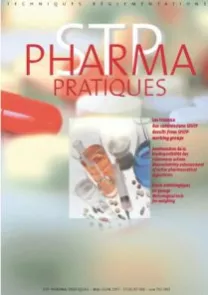All publications
An All-Purpose Vehicle for Low-Energy Capsule Filling
Tablets&Capsules - Apr 2023
Capsules are perceived as elegant, easy-to-swallow dosage forms, widely used for delivery of nutraceutical and medicinal preparations. Advances in capsule technologies have hugely facilitated the incorporation of liquid, semi-solid, and solid ingredients into capsules.
LIPID-BASED EXCIPIENTS – Misconceptions About Lipid-Based Drug Delivery
Drug Development & Delivery - Apr 2023
Cannabinoid molecules and their love of lipid excipients
Pharmaceuticals & Cosmetic Review - Feb 2022
DOs and DON’Ts for developing successful SEDDS formulations to enhance API bioavailability
Tablets&Capsules, p.37-39 - Apr 2020
A snapshot of lipid excipients for topical formulations
Pharma Times – Vol. 51 – No. 59 - Sep 2019
Lipid excipients in pharmaceutical technologies
Nabil FARAH and Joel DENIS
Lipidic excipients in drug delivery for solubility and bioavailability enhancement
Prashantkumar K. PARMAR, Srilaxmi G. RAO, Arvind KK. BANSAL
From exploration of lipids to its exploitation in market: Pharmaceuticals, Nutraceuticals and Herbal
Saurabh ARORA, Abhinav GARG, Karishma KAPOOR
A snapshot of lipid excipients for topical formulations
Renuka TIWARI, Ketkee DESHMUKH, Agnivesh SHRIVASTAVA, Kanchan KOHLI
Strategic lipid-based delivery interventions for enhancing oral bioavailability of BCS II/IV drugs
Teenu SHARMA, Ranjot KAUR, Sumant SAINI, Atul JAIN, Bhupinder SINGH
Unleashing role of excipients in overcoming formulation challenges
Meenakshi VENKATARAMAN, Megha MARWAH, Mangal NAGARSENKER
Role of lipid excipients in oral sustained release drug delivery systems
Divya JAIN, Namita DESAI

The Gelucire® family
Pharma Excipients - 2018
Complex Interplay between Solubilization, Digestion, Supersaturation and Absorption of Poorly Soluble Drugs with Lipid-Based Formulations
Current Drug Delivery, 2018, 15, 749-751 - 2018
LIPID-BASED DELIVERY – Are Lipid-Based Drug Delivery Systems in Your Formulation Toolbox?
Drug Development & Delivery, Vol. 17, No. 7, p.20-25 - Oct 2017
This article reviews the causes of poor bioavailability for drugs. It provides an introduction to lipid-based drug delivery systems, and how the formulation approach can be used to overcome impediments to good bioavailability of therapeutic actives, including poor water solubility, low permeability, and degradation by stomach acid or enzymes in vivo.
Amélioration de la biodisponibilité des substances actives via la formulation [Bioavailability enhancement of active pharmaceutical ingredients through formulation strategies] galénique
STP Pharma Pratiques, Mai-Juin 2017, n°1 - 2017
The SFSTP commission on Bioavailability published an article reviewing the formulation strategies to enhance the bioavailability of APIs.
Interestingly this article is both in French and English languages.
Table of content:
I Introduction
II Prerequisites
1 Initial identification and characterization of the active ingredient
1.1 Physico-chemical characteristics
1.2 Impact of physicochemical characteristics on absorption
1.3 Passive diffusion prediction tools
1.4 In silico prediction
2 Biopharmaceutical classifications
III Formulation strategies
1 Prerequisites
2 Techniques for increasing the dissolution rate
3 Solubility enhancement technologies
4 Improving the permeability, oral route
IV Control, assessment, prediction of the bioavailability
1 Physicochemical control methods for the manufacturing intermediates and finished products
2 Assessing and predicting the bioavailability of the formulations
V Alternative strategy: changing the route of administration
VI Conclusion: decision tree
